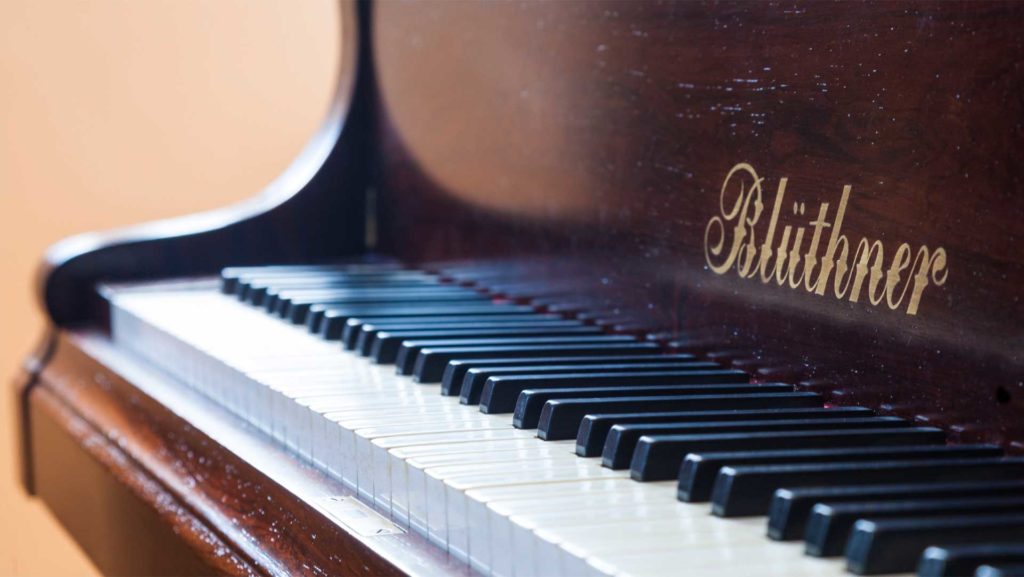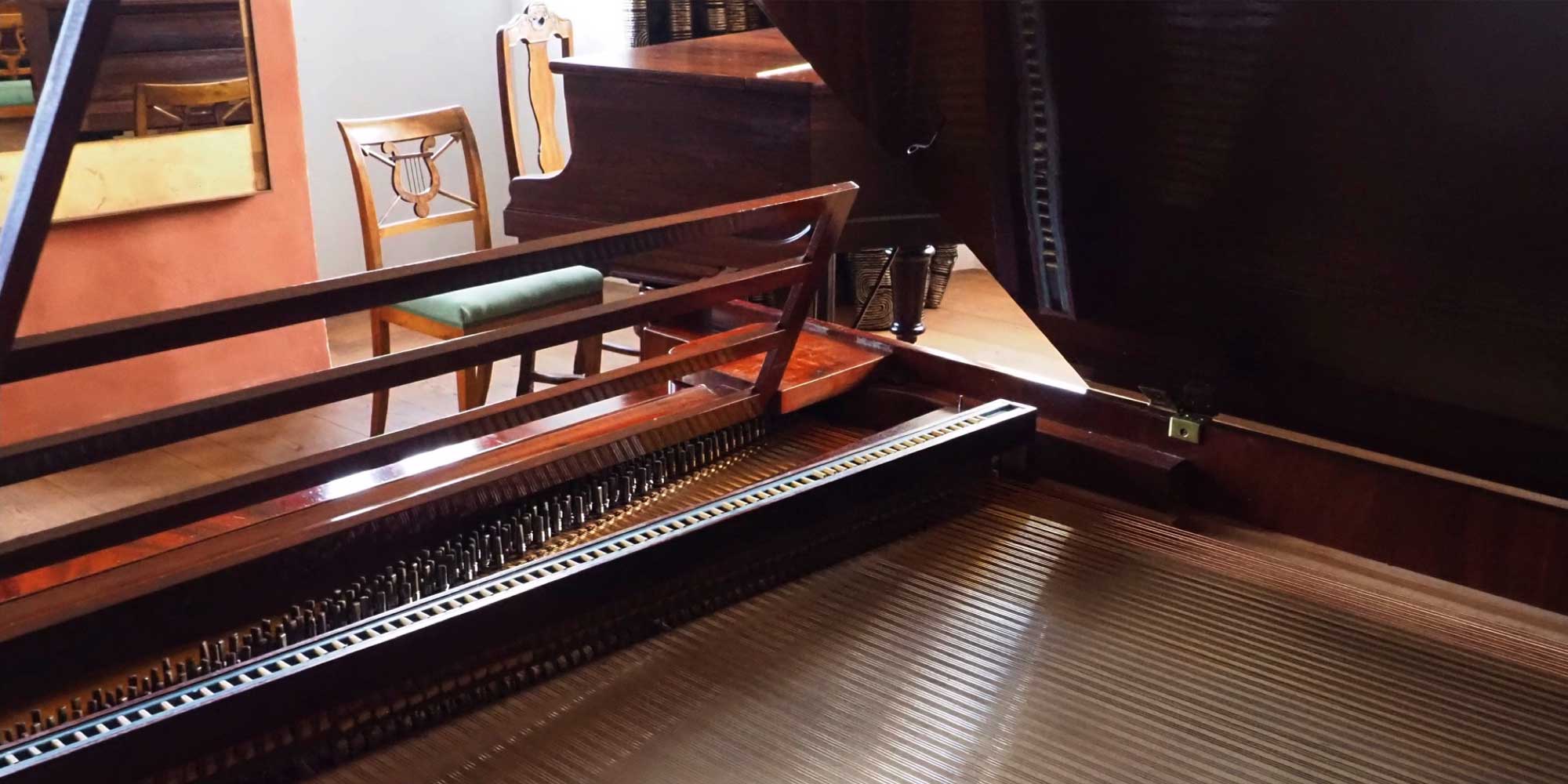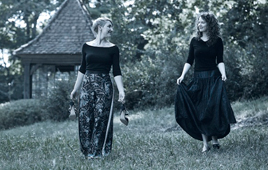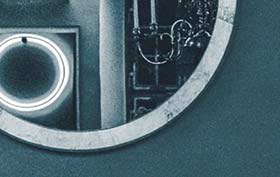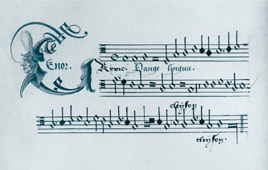A growing collection of historical keyboard instruments supports the Schloss Weißenbrunn Music Academy in its goal of promoting historical performance practices.
All instruments are original instruments and are made available for study purposes and concerts.
Thus, in film recordings and concerts, audiences may experience the authentic sound of the respective time.
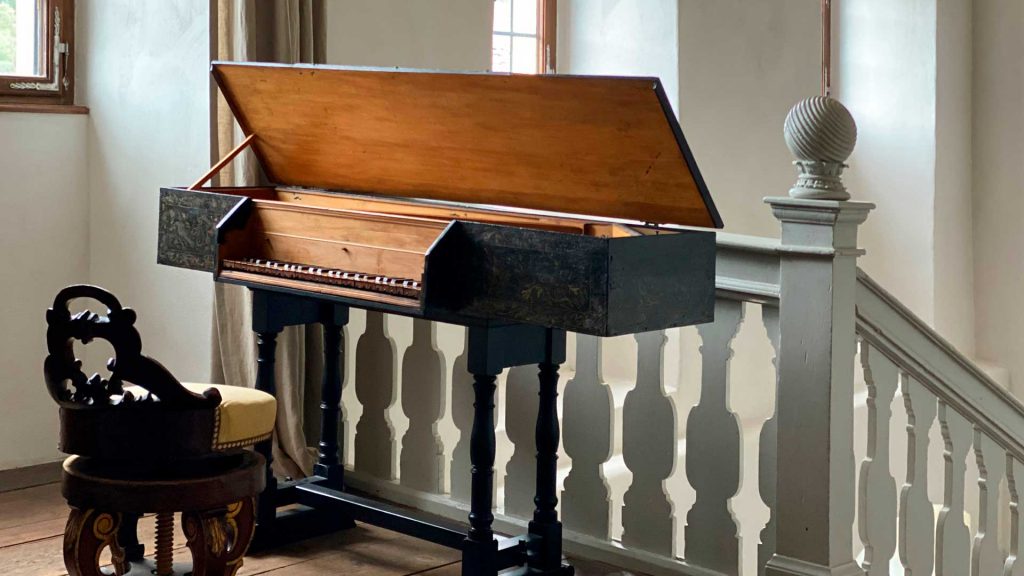
ITALIAN VIRGINAL
presumably late 16th century, attributed to Francesco Poggio
Keyboard C-f3 (C, D, E, F, G, A-f3 as short octave)more
The unsigned virginal (false-inner-outer) is set in black and painted with fine chinoiseries in the form of birds and vines.
The virginal was restored by William Jurgensson in Lauffen am Neckar in 1988 and it was revised by Matthias Griewisch in 2023 .
According to Matthias Griewisch, the range and the build would point towards an instrument built in the late 16th century by Francesco Poggio.
The keyboard (C-f3 [C, D, E, F, G, A-f3 as short octave]) has a 3-octave span of 48.1 cm.
The c2-scale is 335mm, the f2-scale is 237mm.
Dimensions of the instrument:
Length: 1512mm
Width: 420/520mm
Total height: 895mm
Body height: 220mm
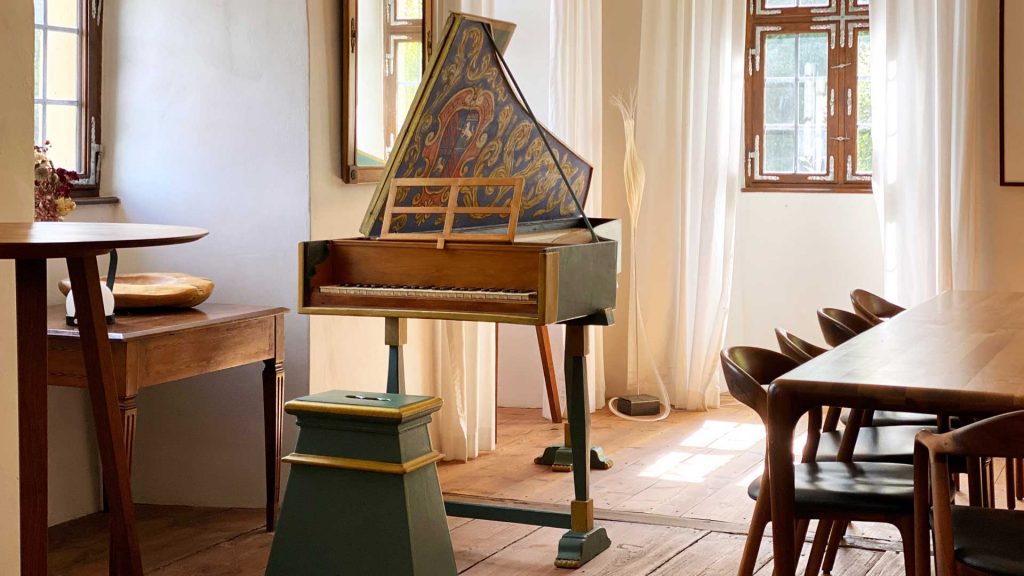
ITALIAN HARPSICHORD
1699, possibly Rome, signed Mario Serafini
Keyboard GG-c3 (GG, AA, HH, C-c3)more
According to Prof. Dr. R. Ewerhart, the instrument was built in Rome in 1699 by Mario Serafini as a false-inner-outer. According to him, the instrument is signed inside under the soundboard. The current tuning pins seem to be old and are not drilled. A number sequence 169[1?] is visible on the keyboard frame in the centre of the keyboard rest pad. The key c3 is signed with the number 1699 in ink.
The keyboard (GG-c3 [GG, AA, HH, C-c3]) has a 3-octave span of 48.0 cm. The instrument has two rows of new jacks equipped with Delrin.
The c2-scale is 357 mm, the f2-scale is 270 mm.
Dimensions of the instrument:
Length: 2175 mm
Width: 817 mm
Total height: 1034 mm
Body height: 241mm
The instrument was restored around 1981 and is in playable condition.
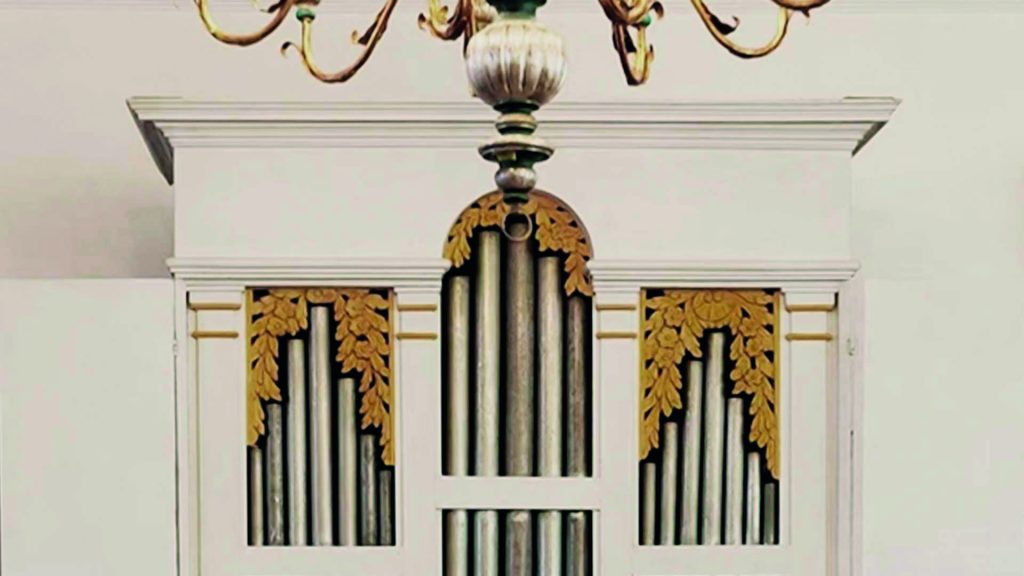
Italian organ
1724, Naples, attributed to Thomas de Martino
Seven stops, without pedal Keyboard range C/D/E/F/G/A-c3 (short octave) Tuning pitch: a1=440.9Hz Tuning: modified meantonemore
The organ is currently being refurbished in the workshop of Christian Wegscheider.
Disposition
Principale C-ds°
Holzgedackt, innen, e°-b1 in prospect, h1-c3 inside
Voce Umana
Ottava
Flauto in XII Sop[rano] Decimaquinta
Decimanona
Vigesimaseconda
Ripieno[zug]
Measurements
Width: 138 cm
Gauge: 50.2 cm
Höhe: 266 cm
Tiefe: 84 cm
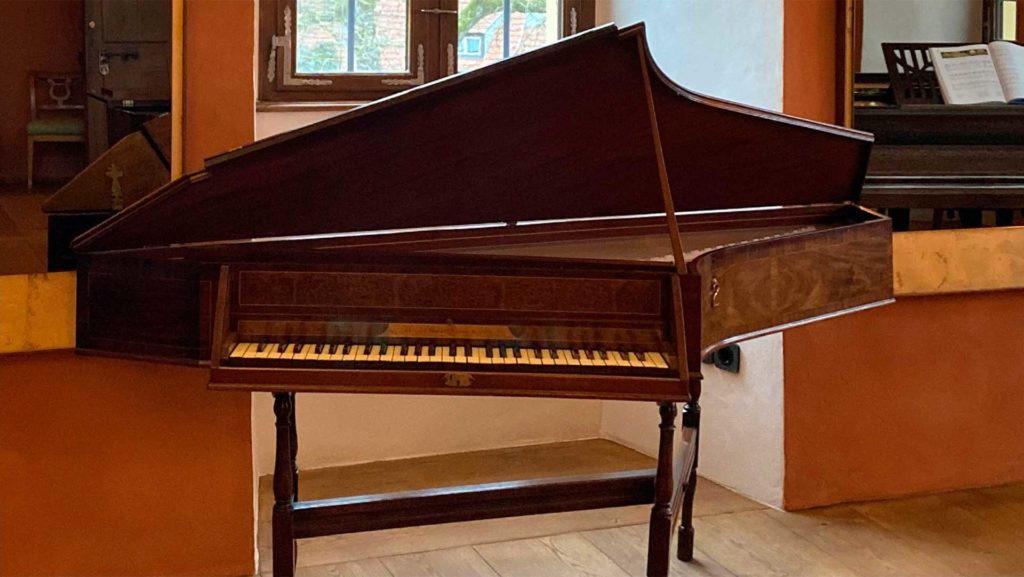
Spinet by Neil Stewart
around 1768, Edinburgh
Compas GG–f3more
The maker of this spinet built around 1768 is unknown. Neil Stewart was an Edinburgh publisher and trader of spinets and fortepianos. Earliest mentions are from around 1759-60. James Logan and possibly Andrew Rochead built spinets for him. Burkart Shudi’s account books also show sales of keyboard instruments to Neil Stewart.
Tuning pitch
Around 410 Hz
Fortepiano by Melchior Guante
around 1795, Münster, Westphalia
Compass FF–c4 , two knee levers, dampers and moderator, tuning pitch ca 415 Hzmore
Melchior Guante (1759 – 1845), established his instrument maker’s business in Münster, Westphalia, and in 1815, passed it on to Heinrich Niemann. It is supposed that Melchior Guante was one of the pupils of Johann David Schiedmayer. His instruments are lavishly designed and have a particularly robust construction. The Guante fortepianos which still exist all have Viennese action with wooden Kapseln.
Tunig pitch
415 Hz
Action
Viennese action with Stein-type wooden Kapseln, no checks, damper below on knee lever (old “threading” model)
two knee levers
dampers and moderator
Strings
2 strings per key throughout
Shape of casing
double-curved bent-side, polished mahogany, wrap-around trim covered with brass
Four tapered legs, square cross section with fluting and contrasting upper part
Keyboard
Lower keys: ivory
Upper keys: ebony
Measurements of the instrument
Width including trims: 995 mm
Length including trims: 2140 mm
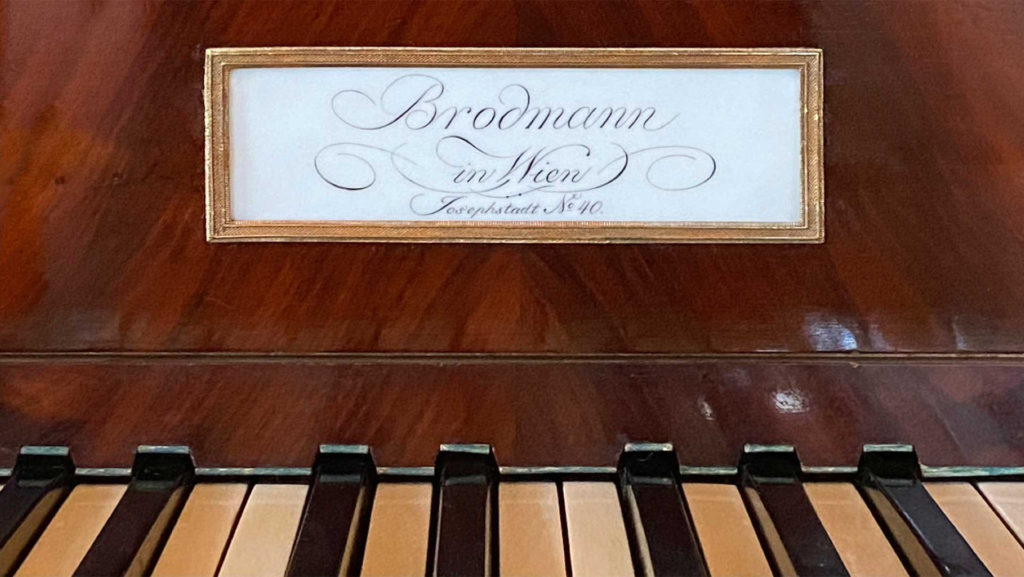
Fortepiano by Joseph Brodmann
1827, Vienna
Compass CC–g4, 5 pedals (one string, bassoon, single and double moderator, dampers)more
The instrument is a wonderful example of the fortepianos built by one of the most famous Viennese makers of the first half of the 19th century. Joseph Brodmann received many important privileges for the improvements he patented, including the triple laminated soundboard featured in this instrument. Brodman’s most important pupil was I. Bösendorfer who worked for him and took over the workshop in 1828. He first signed his instruments with Ignaz Bösendorfer, formerly Brodmann. Later on, he discontinued this addendum.
Tuning pitch
430 Hz
Action
Viennese action
Five pedals
one string, bassoon, single and double moderator, dampers
Strings
3 strings per key throughout
String diameters are very precisely written on the soundboard and therefore were used as an indication for the restringing of the instrument.
Case
Mahogany wood
Keyboard
Lower keys: ivory
Upper keys: ebony
Measurements of the instrument
Width including trims: 995 mm
Length including trims: 2140 mm
Restauration
During the restauration at the Laboratorio di restauro del fortepiano di Firenze in 2019, all parts were disassembled after being measured and cataloged.
In piano restoration it is only rarely possible to keep the original leather because it is often too worn out. The original leather of the Brodmann hammers was in very good condition and where possible it has not been replaced. This is one of the main reason for the round and full sound of the piano.
The regulation of the action was studied to reach the best dynamic to favour the musician’s touch.
After restauration, the piano has kept all features belonging to Brodmann’s manufacturing and is a very good example of what was offered in Vienna at that time.
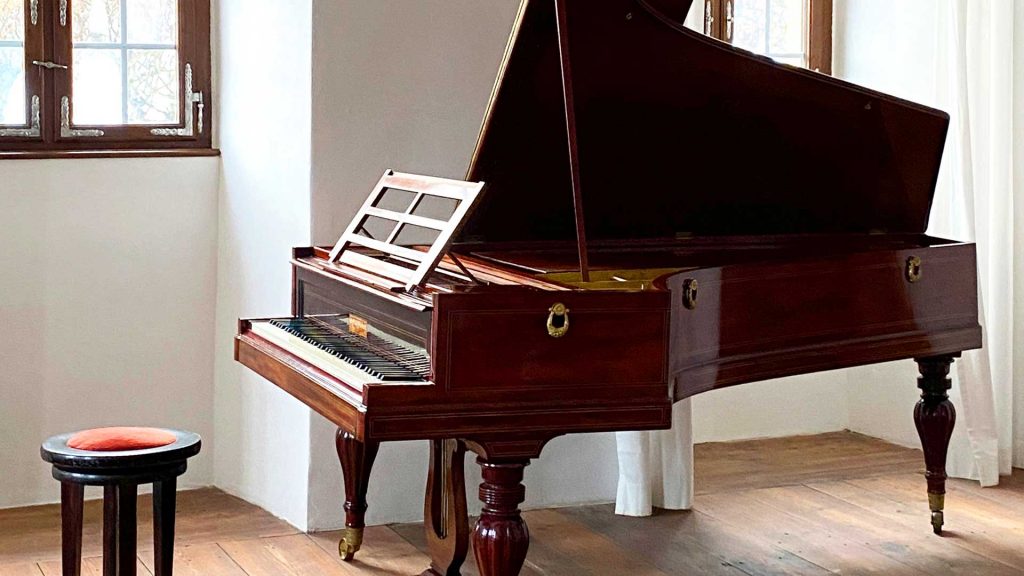
PLEYEL ›Petit Patron‹
1836, Paris
Keyboard range CC–f4, 2 pedals